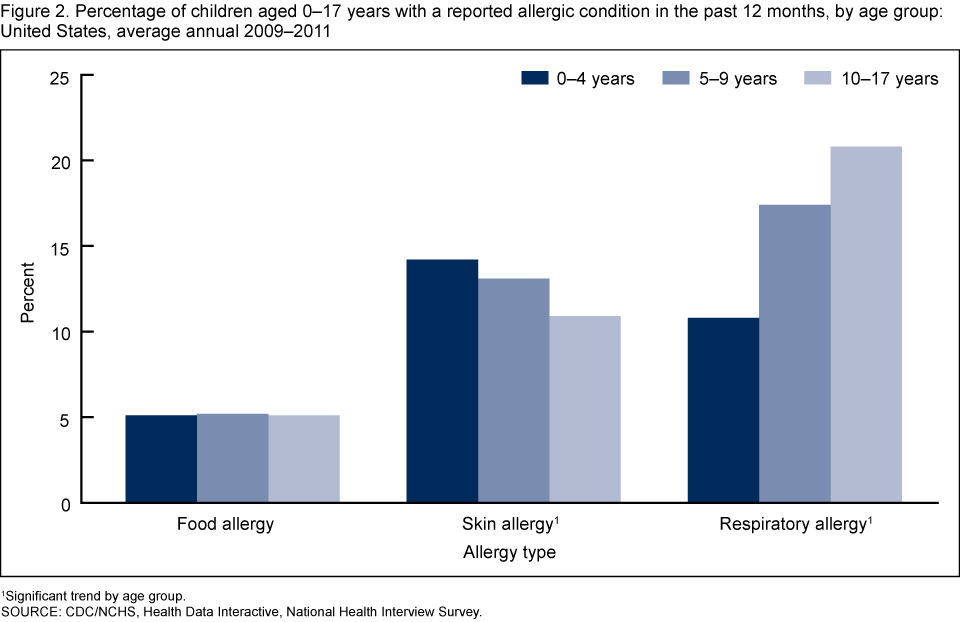Food and Skin Allergies Increase in Children
Posted on byAllergic conditions are among the most common medical conditions affecting children in the United States. An allergic condition is a hypersensitivity disorder in which the immune system reacts to substances in the environment that are normally considered harmless. Food or digestive allergies, skin allergies (such as eczema), and respiratory allergies (such as hay fever) are the most common allergies among children.
NCHS has put out a report that presents recent trends in the prevalence of allergies and differences by selected sociodemographic characteristics for children under age 18 years.
Among children aged 0–17 years, the prevalence of food allergies increased from 3.4% in 1997–1999 to 5.1% in 2009–2011. The prevalence of skin allergies increased from 7.4% in 1997–1999 to 12.5% in 2009–2011. There was no significant trend in respiratory allergies from 1997–1999 to 2009–2011, yet respiratory allergy remained the most common type of allergy among children throughout this period (17% in 2009–2011). Skin allergy prevalence was also higher than food allergy prevalence for each period from 1997–2011
Key Findings from the Report:
- The prevalence of skin allergies decreased with age. In contrast, the prevalence of respiratory allergies increased with age.
- Hispanic children had a lower prevalence of food allergy, skin allergy, and respiratory allergy compared with children of other race or ethnicities. Non-Hispanic black children were more likely to have skin allergies and less likely to have respiratory allergies compared with non-Hispanic white children.
- Food and respiratory allergy prevalence increased with income level. Children with family income equal to or greater than 200% of the poverty level had the highest prevalence rates.
Data source and methods
Prevalence estimates for allergic conditions were obtained from the Health Data Interactive (HDI) table, “Allergic conditions, ages 0–17: U.S., 1997–2011,” available from the Health Data Interactive website. NHIS data were used to estimate the prevalence of allergic conditions for this HDI table.
Posted on by


